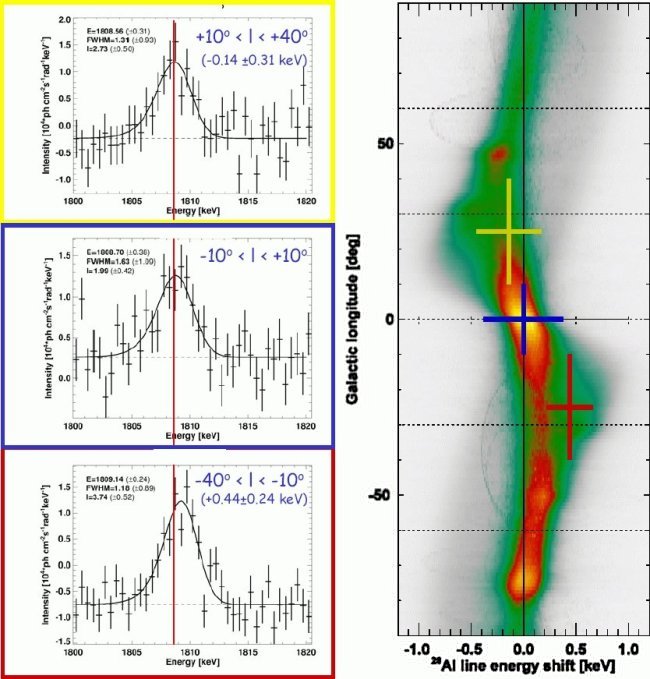
 Credit: R. Diehl (MPE, Garching Germany)
Credit: R. Diehl (MPE, Garching Germany)
Spinning Aluminum
A major question about the Milky Way is how many stars are forming each year, and how many stars die. A new discovery by the INTEGRAL satellite observatory using a radioactive isotope of aluminum have helped to answer to this question. The aluminum isotope, 26Al, is a particularly important tracer of star formation and stellar death since it's produced in massive stars, and it's got a very short half-life (astronomically speaking, that is; only about 750,000 years) which means any 26Al which is observed has been produced by recent stellar activity. The decay of 26Al produces a gamma-ray emission line which can be detectable over immense Galactic distance by INTEGRAL. The image above shows, on the left, lines of 26Al emission at 3 positions of the Galaxy, and on the right, a spatial reconstruction of the distribution of 26Al through the Galaxy. INTEGRAL's spatial resolution showed that most of the 26Al is associated with star forming regions, and its spectral resolution allowed astronomers to show that the 26Al rotates with the Galaxy. Detailed analyses of the 26Al emission detected by INTEGRAL indicate that about 1-2 massive stars die per year, while about 7 stars are formed.
Last Week *
HEA Dictionary * Archive
* Search HEAPOW
* Education
Each week the HEASARC
brings you new, exciting and beautiful images from X-ray and Gamma ray
astronomy. Check back each week and be sure to check out the HEAPOW archive!
Page Author: Dr. Michael F. Corcoran
Last modified Tuesday, 27-Feb-2024 10:06:35 EST


